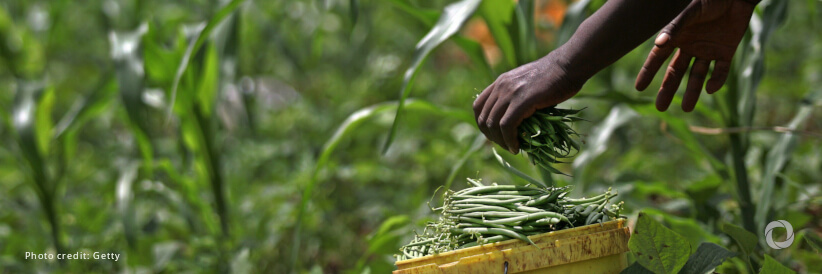Secretary of Agriculture Tom Vilsack and USAID Administrator Samantha Power released the U.S. government’s Global Food Security Research Strategy, underscoring the U.S. government’s commitment to ending hunger and malnutrition and building medium to long-term sustainable resilient food systems. The new research strategy emphasizes priority objectives and the use of data to help strengthen the impact of U.S. food security assistance and, with America’s leadership, generate sustainable solutions for addressing the root causes of hunger and malnutrition, which are both inextricably linked to entrenched, extreme poverty.
The new strategy builds on an exceptional record of achievement from past U.S. investments across agriculture and food systems research. For example, USDA and USAID, in collaboration with universities and partners around the world, successfully averted widespread failure of wheat harvests in the face of a new and fatal strain of wheat stem rust that threatened global harvests over the last 15 years. Other accomplishments also include partnerships that have brought drought-tolerant maize (corn) to approximately 17 million acres across the eastern and southern Africa regions, offering nearly seven million farm families (35+ million people) greater food security as we combat climate change. U.S. farmers, ranchers, and consumers also benefit from these investments, enabling them to improve production, stay ahead of new pests, and be ready for changing climatic conditions. U.S. research initiatives have also advanced vaccines for livestock, limited invasive pests and diseases of crops, and other solutions to address global food security challenges.
The research strategy will underpin the United States Government Global Food Security Strategy (2022-2026), which makes clear that sustainable agricultural productivity growth is most effective in achieving the concurrent goals of reducing extreme poverty and hunger while helping to lift the real incomes of the poor, and making diets nutritious and affordable for all.
“Investment in, and support for, agricultural research and development are imperative so that the world’s farmers have access to innovations that enhance productivity and efficiency, build resilience and prosperity while adapting to challenges like the COVID-19 pandemic, water insecurity, the climate crisis, and conflict,” said Agriculture Secretary Tom Vilsack.
USAID Administrator Samantha Power said Climate change shows no signs of slowing. Neither does hunger. This Strategy confronts these dual, interlinked threats with one of the most powerful weapons: research and innovation.
USDA and USAID also jointly led the whole-of-government effort to develop the Global Food Security Research Strategy. The extensive consultations with development partners, scientific societies, universities, federal research agencies, and researchers on the ground around the world helped to identify where science and research data can best advance the goals of a broader food-security strategy.
The new research strategy focuses on three areas where science and innovation are essential to progress:
- Climate-smart agricultural innovations
- Improved nutrition through high-quality, affordable diets, and
- Genetic improvement of resilient crops and livestock
This strategy will guide investments in technologies, tools, and practices that generate solutions while building capacity in our partner countries. It provides a basis for discerning research opportunities that will provide widespread increases in food security. Emerging opportunities for both food security and the environment include reducing greenhouse gas emissions intensity and improving production efficiency while helping lift people up from poverty and malnutrition. New approaches to soil health management will help optimize carbon sequestration and resource conservation while sustainably enhancing productivity and livelihoods.
More efficient use of water resources through smarter irrigation techniques will help diversify production and grow incomes while putting more affordable, nutritious, and safer foods within reach of low-income families. Taking advantage of cutting-edge laboratory techniques and the latest in behavioral science, “One Health” multi-sectoral approaches will help reduce the risk of disease transmission at the human-agriculture-ecosystem interface. And across food systems, from farm to table, digital tools will bring new improvements to food availability, access, stability, quality and safety, and nutritional outcomes, all while promoting inclusive agriculture-led economic growth.
Without innovation and advances derived from collaborative research, global food and supply chain crises will continue and likely worsen. U.S. leadership in research and innovation has been at the heart of past agricultural breakthroughs and will be essential to realizing a bright, shared future, here at home and around the world in face of some of the most pressing challenges the world has ever seen. The United States remains uniquely positioned to lead, by virtue of its federal agencies, universities–including minority-serving institutions, and private-sector research strengths that span biological, physical, social, and behavioral sciences.
In partnership with scientists in priority countries around the world, the organizations are working to solve real-world problems, while also finding innovative solutions to help better prepare U.S. farmers and ranchers to meet emerging challenges, such as new pests or diseases, or unprecedented heat waves and droughts.

